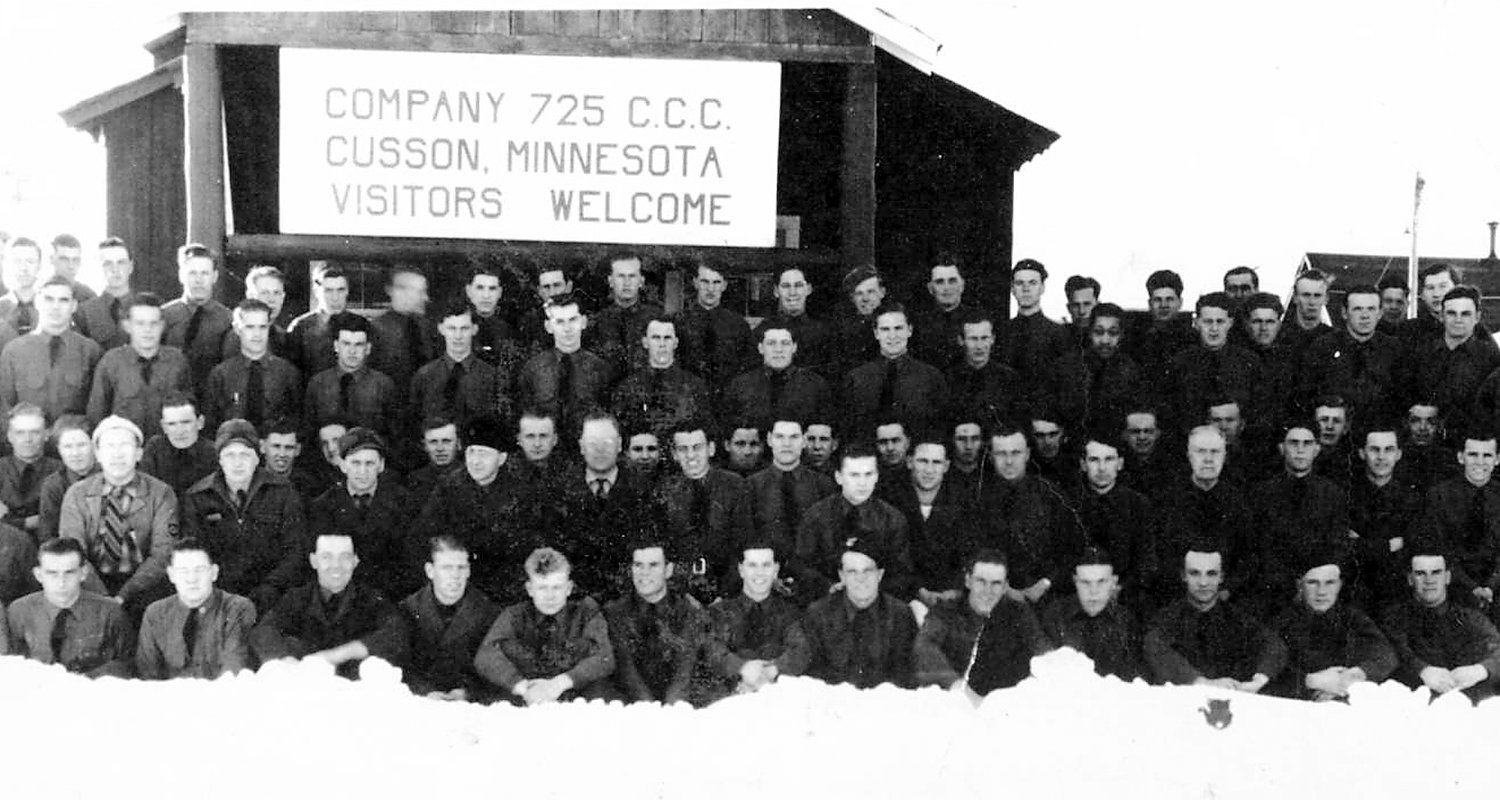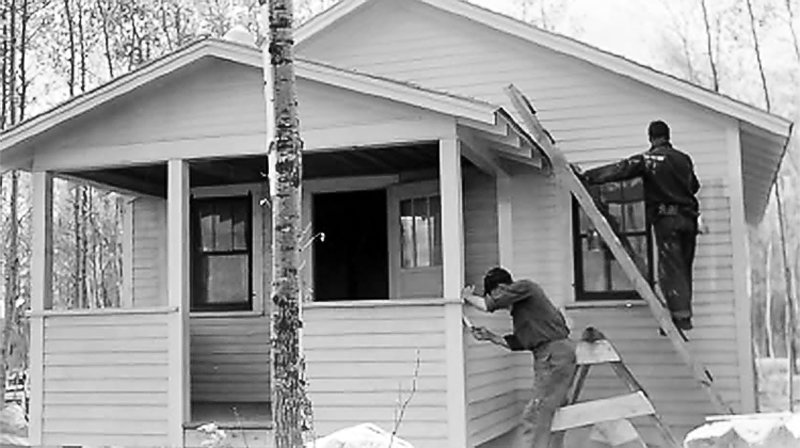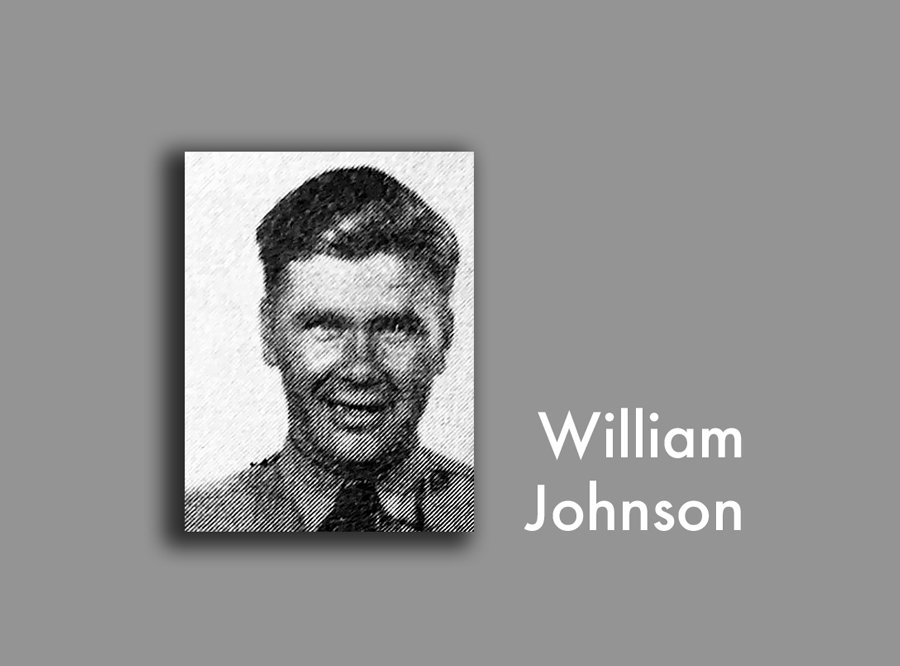Support the Timberjay by making a donation.
Remembering the CCC
Does the Depression-era program offer solutions for our latest crisis?
REGIONAL—The current pandemic has left most of us with plenty of time to spend at home, and I’ve used some of that time recently to sort through old storage boxes, a few of which …
This item is available in full to subscribers.
Attention subscribers
To continue reading, you will need to either log in to your subscriber account, or purchase a new subscription.
If you are a current print subscriber, you can set up a free website account and connect your subscription to it by clicking here.
If you are a digital subscriber with an active, online-only subscription then you already have an account here. Just reset your password if you've not yet logged in to your account on this new site.
Otherwise, click here to view your options for subscribing.
Please log in to continue |
Remembering the CCC
Does the Depression-era program offer solutions for our latest crisis?
REGIONAL—The current pandemic has left most of us with plenty of time to spend at home, and I’ve used some of that time recently to sort through old storage boxes, a few of which haven’t been opened since my mother passed away in 1993.
In one of those boxes, I discovered my father’s Memories of the Civilian Conservation Corps (1937) yearbook and it has provided a small but meaningful window into some of the history and positive effects of the CCC program, created by President Franklin Delano Roosevelt during the Great Depression. I wonder whether such a New Deal experiment might be relevant to our current national and global crisis, which echoes the human, governmental, social, and economic impacts of the Great Depression.
To understand how the CCC affected my family, it helps to have a bit of history. My paternal Swedish grandparents, Minde and Nels Johnson, and their three daughters emigrated to Tower, Minnesota, in 1903. Reports from early Swedish emigrants painted the American Midwest as an earthly paradise and praised American religious and political freedom and undreamed-of opportunities to better one’s condition. Nels worked for the railroad in Tower until 1904 when the family moved to their 100-acre homestead in Orr. My father, William Johnson, was born at the homestead on Oct. 12, 1912. He was the youngest of the eight Johnson children. The homestead remains in the family today.
During his youth, my father served as a proud member of the CCC from 1933 to 1937, serving as a state toolman with CCC Company 725. Company 725 was organized at Fort Snelling on June 2, 1933, and opened its first camp, in Cusson, later that month. Company 725 also built two side camps, Angora (F29) and Vermilion River (S94).
Cusson was a company town platted by the Virginia Rainy Lake Lumber Company in 1909 and it operated as the company’s headquarters until 1929, after which it was sold in its entirety to Nick Ofstad.
Company 725 operated Cusson Camp, serving a work area designated as the Kabetogama State Forest, until it closed on Oct. 30, 1941. Enrollees also worked at the game food nursery at Gheen and, from 1935 to 1938, built the Orr roadside parking area on Pelican Lake, designed by landscape architect Arthur R. Nichols under the direction of a stonemason from International Falls. This roadside area is still active today, an example of a project that beautifies the roadside, a major conservation goal of the CCC.
Shortly before closing, officials described Cusson as an “outstanding CCC camp, rated by Army inspectors as the best camp in Minnesota during the past year.” Years after closure, on March 2, 1989, the four remaining shop buildings from the camp were listed on the National Register of Historic Places.
At the beginning, ten “local experienced men” (LEM’s) were hired to train the new enrollees as woodsmen and workers. Initial work for the company was the construction of eight miles of new road. Work was frequently delayed that first summer by emergency calls for firefighters. The first few calls brought plenty of volunteers, but thereafter there had to be a draft each time a new fire call came in. The initial romance of “smoke eating” became an exhausting monotony as the duty, which included working on Saturdays, Sundays and holidays, repeated through the summer. With the waning of the summer heat, the fires gradually died out and the enrollees resumed a more normal weekly work schedule.
My father enrolled in the CCC in December 1933 and arrived at Vermilion River Camp S94 on Jan. 4, 1934. While in service he performed many assignments including: Company Shoemaker, Tool Ensign, Leader, Saw Machine Operator, Tractor Operations Leader, Tool Supply Sergeant, and State Toolman.
Camp life for my father and the other enrollees was far different from anything they had previously experienced. Many were away from home for the first time and were holding their first steady jobs. In the early years there were five applicants for every opening. Each candidate first was interviewed by the local selecting agency to determine his capacity to benefit from the CCC program. Next was passing the physical examination and two weeks of training at Fort Snelling. Then my father and other successful candidates took the oath of enrollment.
The enrollees worked under experienced foremen (LEM’s) and received on-the-job training. The basic cash allowance for all enrolled men was $30 a month. Almost every man sent $25 home each month to his family.
Life in a camp involved a close association with 200 other men of diverse backgrounds, skills and temperaments. It included good meals, hard work, a good sleep every night and a regular schedule. It had a profound effect on the millions of men who experienced it as their health and attitudes improved from the work, the activity and the comaradarie. The country benefited from their conservation work, their increased skills, and from their strengthened outlook on life and living.
CCC camps looked and operated like military bases, not surprising since they were run by the U.S. Army. Each camp was composed of one company of approximately 200 men. Each camp was a self-contained unit, a village. Enrollees quickly found nicknames for almost everything, including each other. They soon dubbed the army “Mother,” because it fed, clothed, disciplined and sheltered them. In many ways, this valuable training of so many young American men was a big factor in helping the United States fight and win World War II.
When enrollees came down with communicable illnesses such as strep throat, measles, or chicken pox, there were few ways to stop the disease from spreading. Often the best option was to quarantine the infected camp until the disease had run its course. Most CCC camps were quarantined at least once, and quarantine signs were posted telling outsiders not to enter.
In April 1934, Company 725 received orders to move to the fairgrounds in New Caledonia, in far southern Minnesota. They moved south and tented down some 400 miles from the northwoods they had called home.
Field work at the new camp was spent in rock quarries, building dams, terracing farms, and planting trees. The men lived in tents and in October they put in smoky Sibley tent stoves (from the Civil War). The men withstood the smoke and cold of those primitive stoves somehow.
On Nov. 1, 1934 Company 725 was on the move again. My father and his company embarked on another 400-mile ride from New Caledonia back to Orr in a convoy of 30 trucks. In my Dad’s yearbook it says, “There is not a man who took the 400-mile ride from New Caledonia to Orr in that convoy who will ever forget the extreme discomfort of riding open trucks that distance in the November weather we were blessed with.”
In January 1935, a new contingent of 135 rookies arrived in Orr by train. From Orr, in the midst of a 20 below winter night, they were then transported 21 miles to Camp 725 in trucks. It was a tough initiation to the northern camp for them. This new influx put the camp at 295 and men were sleeping all over the place. The schoolhouse and large recreation hall were crowded with cots. After the additional men arrived, a side camp was opened at Crane Lake on King William’s Narrows and 50 men volunteered to isolate themselves 24 miles from the main camp for two months. According to my father’s CCC yearbook the camp was a beautiful spot and the enrollees seemed to enjoy their isolation.
On April 15, 1935, another 36 new enrollees joined the ranks and they stepped into what they thought was a sportsman’s paradise. The men began preparing fishing paraphernalia. Their hopes were short lived, though, since orders soon came to move again.
On May 1, 1935 the camp’s equipment was all loaded on a special train at Orr. They embarked for their new destination in Lewiston, 350 miles to the south. On May 2, the enrollees and their camp’s equipment arrived in Lewiston in the middle of a wet spring snowstorm and a muddy plowed field.
In October 1935, Company 725 moved again. This time the new location was about two blocks away to a new permanent camp that was under construction. The enrollees waded in deep mud at the new camp during the construction. The wiring was not completed for a month. The enrollees worked on their camp newspaper, read books and played pool illuminated by tallow candles. Said one of the men, “When the lights finally came we spent some weary hours scraping tallow off everything that a candle could possibly stand on.” With the coming of colder weather the coal burning stoves were a welcome change from the Sibley stoves and old wood burners previously used for heat in the barracks.
For holidays, especially Thanksgiving and Christmas, enrollees got special meals. Camp newspapers sometimes described them nostalgically as being like “mother used to prepare.” The Thanksgiving dinner in 1936 consisted of roast turkey and dressing, giblet gravy, candied sweet potatoes, mashed potatoes, cranberry sauce, asparagus tips, lettuce salad with French dressing, Parker House rolls with butter, bananas, grapes, apples, nuts, candy, mince pie, pumpkin pie, Neapolitan ice cream, mints, wafers, fruit punch, olives, dill pickles, and coffee. Liquor was not allowed in camps, though enrollees often got a bottle of beer with a holiday meal.
My father was discharged from Company 725 and the CCC on Sept. 13, 1937, while working in Lewiston. His yearbook provided me with a deeper knowledge regarding the period of the Great Depression and how the President and his administration acted boldly to create a New Deal for the citizens of our country. It was a unique time in our nation’s history when the President, Congress, and the agencies of the federal government cooperatively created the programs of the New Deal, programs which benefited all to rebuild the economy, natural environment, spirit and, perhaps most importantly, hope.
A total of 4,500 CCC camps were built in every state and some territories. Business recovery stimulus of more than $707 million was spent across the country for manufactured goods, food stuffs, automotive equipment, construction materials and other articles needed in operation of the camps.
More than one hundred types of projects were undertaken by the CCC enrollees, including operations for forest regeneration and protection, flood control, irrigation and drainage, landscape, recreation, roadside beautification, wildlife and range conservation, soil erosion control and others.
Some specific work items completed by the enrollees were the following:
• 650,000,000 trees planted
• 45,000 miles of telephone lines built into national forest and park fire detection systems
• 40,000 miles of fire breaks opened in forest areas
• 2,202,000 check dams built in gullies to prevent erosion
• 32,500 acres of public campgrounds for recreational purposes, and many others.
In addition to new construction work, they also maintained 91,000 miles of telephone lines, 30,000 miles of fire breaks and 163,000 miles of trails and roads.
An average of 51 camps a year were operating during this period in Minnesota. Accomplishments in Minnesota included tree planting, firefighting, lookout tower construction, recreational development, fish stocking in thousands of lakes, and more. Over 86,000 men were enrolled in Minnesota camps during the era of the New Deal.
Each camp had their own newspaper. The national paper for the national CCC program was Happy Days, published weekly in Washington, D.C.
As there are echoes of the Great Depression in this year’s pandemic, there could be valuable approaches found for current times in the programs of the New Deal and the CCC. Here is an excerpt from David Brooks, a well-known opinion columnist for the New York Times:
We Need National Service. Now.
May 7, 2020
“There is now a vast army of young people ready and yearning to serve their country. There are college graduates emerging into a workplace that has few jobs for them. There are more high school graduates who suddenly can’t afford college. There are college students who don’t want to return to a college experience. This is a passionate, idealistic generation that sees the emergency, wants to serve those around them and groans to live up to this moment.
“Suddenly there is a wealth of work for them to do: contact tracing, sanitizing public places, bringing food to the hungry, supporting the elderly, taking temperature at public gathering spots, supporting local government agencies, tutoring elementary school students so they can make up for lost time.”
Perhaps it is time for the government of our country to use the tools of democracy to once again keep its social contract with its citizens.













